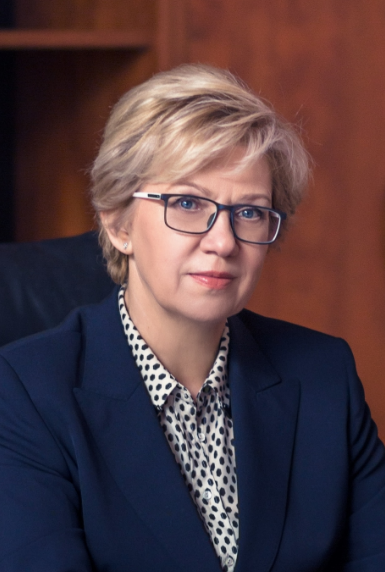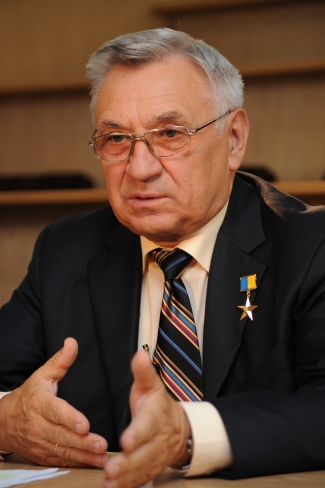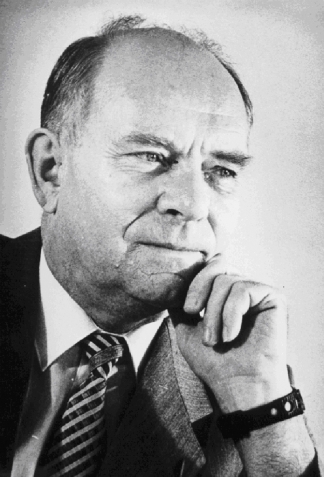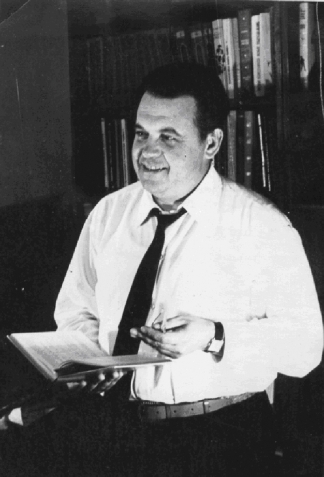DATE OF FOUNDATION
27.03.1920
DATE OF FOUNDATION
until August 2014 –
91034, Luhansk, 20a Molodizhnyi sq.
since August 2014 –
93400, Sievierodonetsk Luhansk region, 59a Tsentralnyi Ave.
from February 24, 2022 –
17 Ioanna Pavla II Street, Kyiv, 01042
E-mail: uni@snu.edu.ua
University website: snu.edu.ua
Excerpt from the Order of the Ministry of Education and Science of Ukraine No. 922 of 18.10.2022:
“…in order to preserve the life and health of citizens of Ukraine, as well as to create a safe educational environment, organization of education, educational process under martial law, I hereby order:
1. Temporarily relocate Volodymyr Dahl East Ukrainian National University (in accordance with the existing license for educational activities and accreditation certificates) to the premises of the Kyiv Professional College of Electronic Devices (identification code 21534941, location: 17 Ioanna Pavla II Street, Kyiv) until the end of martial law…
Minister Serhii Shkarlet”
Minister S. Kvit»
UNIVERSITY STATUS
- Classical
- National
- Carrier of the personal name of Volodymyr Ivanovych Dahl – “Cossack of Luhansk”
- Research self-governing (autonomous)
All of these extraordinary status characteristics in the hierarchy of Ukrainian universities can be supplemented by one more – it was the largest engineering institute in the former USSR.
And it all started almost anew when the university returned from the Omsk evacuation after World War II, and only the name “Luhansk Engineering Institute” was actually preserved, since both the staff and equipment remained in Omsk, where the Omsk Technical University, the largest in Siberia today, was founded. This is recorded in a memorial plaque on the main building of Omsk University. Luhansk University, having gone through the stage of branches of well-known Moscow and Kharkiv universities, became an independent university with its own name in 1960. Read more about this in the section “Rector’s Hall”.
BRIEF HISTORY OF THE UNIVERSITY DEVELOPMENT
Volodymyr Dahl East Ukrainian National University dates back to March 27, 1920, when the first higher education institution in Donbas to train personnel for machine-building enterprises was established in Luhansk. At that time, it had mechanical and electrical engineering faculties with 20 teachers and 132 students. During the Second World War, the Mechanical Engineering Institute (as it was called in those years) was evacuated to Omsk and became the basis for the creation of the largest in Siberia, the Omsk Polytechnic Institute (today – Omsk State Technical University).
On May 8, 1993, the Cabinet of Ministers of Ukraine established East Ukrainian State University on the basis of Luhansk Engineering Institute and several higher education institutions of Luhansk and Luhansk region. In 2000 it was granted national status and in 2001 it was named after Volodymyr Dahl. In 2010, the university was granted the status of a self-governing (autonomous) national research higher education institution.
Over the years, more than 190 thousand highly qualified specialists have been trained.
In 2010, the total number of students, postgraduates, doctoral students and trainees studying at the university in all forms of education was more than 30 thousand people.
The structure of Volodymyr Dahl East Ukrainian National University included: 8 institutes and 17 faculties in the cities of Luhansk, Sievierodonetsk, Krasnodon, Rubizhne, Anthracite, Yalta, Yevpatoria, Feodosia, Skadovsk, Institute of Postgraduate Education and Distance Learning, University College, Sievierodonetsk Chemical and Mechanical College, Center for Pre-University Training and Career Guidance.
The university had 110 branches of departments in production, a Center for retraining management personnel for entrepreneurship, a Research Institute of Applied Ecology, a Research Institute of Control Systems, 40 research laboratories, a scientific library with a collection of about one million copies, seven educational and research production complexes, 18 educational complexes, a publishing house with a printing house, a business center, and other structural units.
The university was home to 36 Honored Workers of Education, Science and Technology and 92 excellent students of Ukraine. Among the teachers who conducted the educational process, there were 971 with academic degrees and academic titles, including 182 doctors of sciences and professors.
Doctoral and postgraduate programs in 20 and 54 specialties, respectively, trained new academic staff. Fifteen specialized academic councils were established to defend doctoral and PhD theses in 22 specialties.
The powerful material and technical base was located in 57 educational and laboratory buildings and structures with a total area of about 230 thousand square meters. Students used about 3200 modern computers in the educational process. The university also had a sanatorium-preventorium with 100 beds, recreation centers in Yevpatoria, Skadovsk, Feodosia and Yalta in the Autonomous Republic of Crimea, as well as on the Siverskyi Donets River. Students were provided with 8 dormitories with 4000 beds, 6 canteens with 824 beds, 12 cafeterias with 452 beds, and medical centers. For sports and physical education, the university had stadiums, sports buildings, summer sports facilities, etc.
In other words, all conditions were created for the harmonious development of a student’s personality at the university, which fully met the status of a research university and became a center of culture, knowledge, and research. This was confirmed both at the documentary level (certification, accreditation) and in essence (few universities, even classical universities, can be distinguished by almost complete coverage of all branches of knowledge available in the country). A distinctive feature of the university is the democratization of the educational process, in particular the building of creative relationships between teacher and student, namely, the transition from the principle “teacher teaches and student learns” to the principle “teacher and student are equal partners.”
Unfortunately, the dynamic progress of University was interrupted by the armed conflict in the Luhansk region.
In September 2014, the university was temporarily relocated to Sievierodonetsk until the end of the armed conflict, where it resumed the educational process on the basis of its separate structural unit (the Institute of Technology).
The evacuation of the university to Sievierodonetsk intensified the further development of distance education. In a short period of three months (September, October, November), the distance learning system was restored. As of April 2015, the number of distance courses developed and implemented in the educational process reached almost 4000.
This was made possible because since 2010, Volodymyr Dahl East Ukrainian National University’s faculty has been using distance learning and other innovative methods to improve the quality and accessibility of education. In 2012, by the decision of the Academic Council of the University, this process became systematic: regulatory documents on the introduction of distance learning and the activities of the distance education center were developed and adopted; professional development of the university’s academic staff was organized. By April 2014, even before the relocation of the university, the number of distance courses created had reached more than one thousand, and the number of university teachers certified for distance education was 540.
Volodymyr Dahl East Ukrainian National University has a developed network of distance education on the MOODLE platform (short for Modular Object-Oriented Dynamic Learning Environment), which is necessary for the further development of the university in a qualitatively new direction. This is in line with global trends in the development of higher education using on-line technologies (according to the forecast, by 2020, 2/3 of students will receive higher education through distance learning methods).
Currently, the university has seven institutes (Institute of Economics and Management, Educational and Research Institute of Labor and Social Technologies, Institute of Jurisprudence and International Law, Institute of Philosophy and Psychology, Institute of Computer Systems and Information Technologies, Institute of Transport and Logistics, Institute of Chemical Technologies) and seven faculties (including the International Faculty). Five structural subdivisions of the university remain on the territory uncontrolled by the Ukrainian authorities in the cities of Luhansk, Antratsyt, Krasnodon, Stakhanov and the Autonomous Republic of Crimea.
The current license grants Volodymyr Dahl East Ukrainian National University the right to conduct educational activities to train bachelors in 61 specialties, specialists in 92 specialties, and masters in 93 specialties. On the basis of complete higher education in the Master’s program in Civil Service, management personnel for public administration bodies are trained in the specialty “Civil Service”. The Institute of Postgraduate Education and Distance Learning, in accordance with the license, conducts retraining of specialists on the basis of higher education in 45 accredited specialties in 17 areas of training; advanced training of specialists in all accredited specialties at the university and advanced training of teachers.
RECTOR’S HALL
According to the decision of the staff conference (2012), the honorary title “Volodymyr Dahl Honored Professor of East Ukrainian National University” was supplemented with the synonym “Honorary Rector” and the concept of why this title was awarded was clarified. The clarification was made in the latest version of the University Statute (2014) in the text of the definition of the main basis for awarding the title: “Changing the status of a higher education institution to a higher one, raising the level of accreditation”. Therefore, the section “Rector’s hall” consists of two subsections: “current rector” and “honored professors (honorary rectors) who have changed the status of a higher education institution to a higher one”.

Olha Porkuian
THE CURRENT RECTOR
of the Volodymyr Dahl East Ukrainian National University – Doctor of Technical Sciences, Professor.
Born on July 16, 1961 in Borivs’ke village, Luhansk region. In 1984, she graduated from the Faculty of Physics and Technology of Dnipro State University with a degree in Aircraft Manufacturing (qualification: mechanical engineer), receiving a diploma with honors. Since the same year, she worked at the Rubizhne branch of the Voroshylovhrad Machine-Building Institute, and since 1988 she has been a senior lecturer and associate professor at the Department of General Education at the Sievierodonetsk Faculty of Computing Complexes and Systems of the Kharkiv Institute of Radio Electronics.
In 1991, she defended her PhD thesis “Analytical Calculation of Pseudoelasticity” in the specialty “Mechanics of Deformable Solids” at St. Petersburg State Technical University. She defended her doctoral dissertation in 2009 at Kryvyi Rih Technical University. In 2011, she was awarded the academic title of Professor at the Department of Computer-Integrated Control Systems. She completed her research internship at the Polish University of Informatics and Arts (Lodz).
In 1994, the Sievierodonetsk Institute of Technology (STI) of the East Ukrainian State University was founded on the basis of the Sievierodonetsk branch of the East Ukrainian State University and the Sievierodonetsk Faculty of Computing Complexes and Systems. Since the foundation of STI until 2000, Olha Porkuian worked as an associate professor at the Department of General Physics, and since 2000 she has headed the same department. In 2003, she was appointed Deputy Director of the Institute for Scientific Work, and from 2007 to 2014 (this year she was also appointed Vice-Rector of the University for Scientific and International Activities) she worked as Director of the STI.
With the appointment of Olha Porkuian to the position of Director of the Institute, the quality indicators of its activities have improved. A specialized Dissertation Defense Council was established, and the number of doctors and candidates of sciences increased. In 2010, the first of the structural subdivisions of Volodymyr Dahl East Ukrainian National University, the StI began to create a system of distance education. This was a response to one of the global trends in higher education (according to the forecast, by 2020, 2/3 of all students will switch to this form of education). These ideas were supported in 2012 by the Academic Council of the university, which became the basis for the relatively successful transition of Volodymyr Dahl East Ukrainian National University in the fall of 2014 (when the university was evacuated from the war zone in Luhansk to the city of Sievierodonetsk) to the MOODLE distance learning system, currently the most widespread in the world.
Olha Porkuian is the author of 7 books and monographs, 8 patents and copyright certificates, and more than 150 scientific articles. Her research interests include modeling, control and management under conditions of incomplete information, as well as the study of surface ultrasonic waves. She has prepared 3 PhDs. She heads the specialized academic council in the specialty “Automation of control processes”. She was awarded the badge “Excellence in Education of Ukraine”.
HONORED PROFESSORS (HONORARY RECTORS) WHO HAVE CHANGED THE STATUS OF AN EDUCATIONAL INSTITUTION TO A HIGHER ONE:

Oleksandr Holubenko
Doctor of Technical Sciences, Professor. Corresponding Member of the Academy of Pedagogical Sciences of Ukraine, Academician of the International and Ukrainian Engineering Academies. Vice President of the Engineering Academy of Ukraine.
He was born in Luhansk on February 18, 1942. In 1956, he entered the Luhansk Machine-Building College and in 1960 continued his studies at the Machine-Building Institute, graduating with honors as a mechanical engineer in locomotive construction. He also graduated with honors from the Institute of Patent Studies.
Oleksandr Holubenko worked for ten years at a locomotive plant, and then, starting in 1970, at the Luhansk Machine-Building Institute. In 1973, he completed his postgraduate studies at the university ahead of schedule in connection with the defense of his PhD thesis at Kharkiv Polytechnic Institute. In 1987, he defended his doctoral thesis at the Moscow Institute of Railway Transport Engineers.
Since 1973, he has been teaching as a senior lecturer, associate professor, and professor. In 1975 he was elected to the position of Head of the Department of Locomotive Engineering. Since 1991, he has been Vice-Rector and since 1997, Rector of the university, which is now called the Volodymyr Dahl East Ukrainian National Research Self-Governing (Autonomous) University.
Under his leadership, the university has significantly improved its performance indicators. The number of students has grown to more than 33 thousand (foreigners – almost 2000 thousand), doctors of sciences, professors – almost 200 people, candidates of sciences, associate professors – more than 750. Volodymyr Dahl East Ukrainian National University has established 15 specialized dissertation defense councils. More than 80% of the existing 107 departments have become graduating departments. The number of specialties in which bachelors, specialists and masters are trained has increased to 130. The university’s educational and research facilities have been strengthened, and the number of premises has increased to 57. Some of them have become the hallmarks of individual cities: in Luhansk, the buildings of the Faculty of Mathematics, the Institute of Jurisprudence and International Law, and the St. Nevsky Church in the university park; in Yevpatoria, the building of the Crimean branch of the Volodymyr Dahl East Ukrainian National University.
At the same time, Oleksandr Holubenko also focused on the social protection of the university’s faculty, staff and students by increasing material incentives, improving working and learning conditions, as well as improving the health of the educational process in the established branches and recreation centers in the cities of Feodosia, Livadia, Yevpatoria, Skadovsk. At the same time, the conceptual provision of the university’s development was implemented to bring the educational process closer to the cities where students live (Antratsyt, Krasnodon, Stakhanov, etc.).
Almost every year, the university won several gold medals at international and Ukrainian exhibitions, contests, and competitions. All of this allowed the university to enter the top ten universities in Ukraine; it held consistently high positions in all rankings. During the period of his rectorate, the university has raised its status indicators several times, which are the highest in the educational sector of Ukraine today.
Since 1990 Oleksandr Holubenko has been an Honored Worker of Science and Technology of Ukraine, since 1997 – Honorary Railwayman of Ukraine, since 2000 – Honorary Citizen of Luhansk, since 2002 – Honored Professor (Honorary Rector) of Volodymyr Dahl East Ukrainian National University. In 2004, he was awarded the State Prize of Ukraine in Science and Technology. In 2005, he was awarded the Order of the Republic of Poland “Cavalier Cross of Merit”. Full Cavalier of the Order of Ukraine “For Merit”: III degree – 2001, II degree – 2004, I degree – 2007. In the year of his 70th anniversary, Oleksandr Holubenko was awarded the title of Hero of Ukraine with the Order of the State for his significant contribution to strengthening the educational potential of Ukraine, many years of fruitful scientific and pedagogical activity.
Oleksandr Holubenko is the author of 20 books and monographs, more than 400 scientific articles, 145 copyright certificates for inventions and foreign patents. He has personally trained 8 doctors and 17 candidates of science. He created the scientific school “Theory and mathematical modeling of the process of friction with slipping and its use to improve the efficiency of the driving wheels of transport crews”.

Oleksii Koniaiev
(1926 – 1999)
Doctor of Technical Sciences, Professor. Academician of the Engineering Academy of Ukraine, Transport Academies of Ukraine and Russia, Corresponding Member of the International Academy of Engineering.
He was born on October 8, 1926 in the village of Almazna, Luhansk region. From 1943 to 1950, he served in the army and took part in the fighting on the 3rd Ukrainian Front. Then, for fifteen years, Oleksii Koniaiev worked at the Luhansk Locomotive Plant, starting his career as an engineer in the shop that was then called the locomotive assembly shop.
At the age of 34, he headed the plant’s design department and became its chief designer for locomotive construction. He held this position for nine years. As chief designer, Oleksii Koniaiev made a significant contribution to the development of domestic locomotive construction. Under his leadership and direct participation, basic models of domestic mainline diesel locomotives such as 2TE10L, M62, TE109 and others were designed, tested and put into production.
In 1969, Oleksii Koniaiev, as a highly qualified specialist, was invited to teach at the Luhansk Machine-Building Institute and in the second year after defending his doctoral dissertation (1973) he was appointed its rector. He worked in this position for 23 years, the longest tenure among all the heads of universities in the Luhansk region.
His great energy and diligence allowed him to improve the material and technical base of the institute. During the years of his leadership, new educational, industrial and household buildings were built and put into operation, united on a common territory as a campus. The university staff has been significantly strengthened: the number of doctors of sciences and professors has increased to 37, and the number of candidates of sciences and associate professors to 335 (61% of the total number of teachers). Of the 40 existing departments, 20 became graduating departments. New specialties were introduced, including economics, electrical engineering, transportation, and law. All of this allowed for a significant change in the status of the university, which gradually turned from a specialized machine-building university into a multidisciplinary higher education institution. In 1993, East Ukrainian State University was established on the basis of Luhansk Engineering Institute and Oleksii Koniaiev was appointed its president.
Professor Oleksii Koniaiev was awarded the title of Honored Worker of Higher Education of Ukraine. He was awarded 2 orders: “Labor Red Banner” and “For Merit” III degree, 10 medals. Since 1993, he has been an Honorary Citizen of Luhansk, and since 1997, he has been an Honored Professor (Honorary Rector) of East Ukrainian State University.
Oleksii Koniaiev is the author of more than 250 publications, copyright certificates, and foreign patents. He personally trained 3 doctors and 16 candidates of sciences. For a long time, he was the executive editor of the republican interdepartmental scientific and technical collection “Design and production of transport machines”.

Borys Rumiantsev
(1928 – 2007)
Candidate of Technical Sciences, Professor.
He was born in 1928 at the Liebknecht mine in Artemivsk district, Donetsk region. From 1944 he was a student of the Kramatorsk Machine-Building College, graduating with honors in 1948. Since 1948, he has been a student of Kharkiv Polytechnic Institute, and since 1953, a postgraduate student of the Department of Hoisting and Transport Machines and Equipment. In 1956, he defended his dissertation for the degree of Candidate of Technical Sciences; in 1975, he was awarded the title of Professor at the Department of Hoisting and Transport Machines and Equipment.
In July 1960, he was appointed by the Ministry of Higher and Secondary Specialized Education of Ukraine to the position of Rector of the Luhansk Evening Machine-Building Institute. First, under his leadership, the institute was revived from the ashes as an evening university (“ashes” is hyperbole, because the evacuation of the Luhansk Engineering Institute to Omsk during World War II resulted in the loss of almost all of its teachers and equipment), then as a day university, and eventually was transformed into a university with all forms of education: full-time, evening and part-time. These significant status changes were accompanied by a corresponding reproduction of the team of qualified teachers (in 1960, only three teachers had academic degrees and titles, and in 1974 there were already 163) and the material and technical base, which created conditions for a full-fledged educational process.
In 1971, Luhansk Engineering Institute was granted the status of a higher non-categorical university with 10 faculties and 37 departments that train specialists in 17 engineering specialties. Borys Rumiantsev invested a lot of energy and effort in the construction of the campus. The result was the construction of four academic buildings, mechanical workshops, 3 dormitories, and the beginning of the construction of a sanatorium-preventorium. For these indicators, the institute took 3rd place in the socialist competition for everyday life in the former USSR, and in 1972, 1st place; then it was presented through the All-Union Central Committee of Trade Unions at VDNKh of the USSR.
Professor Borys Rumiantsev was awarded 2 orders: “Red Banner of Labor” and “Badge of Honor” and 4 medals. In 1996, he was awarded the title of Honored Worker of Public Education of Ukraine. Since 1997, he has been an honored professor (honorary rector) of the East Ukrainian State University, and since 1998, he has been an honorary citizen of the city of Luhansk.
Borys Rumiantsev is the author of 8 books and monographs, about 200 scientific papers and scientific and methodological developments, 27 copyright certificates, and has been repeatedly awarded VDNKh medals. He is a well-known scientist in the field of grapple construction, and the scientific school of grapplers he created is known in the country and abroad.
